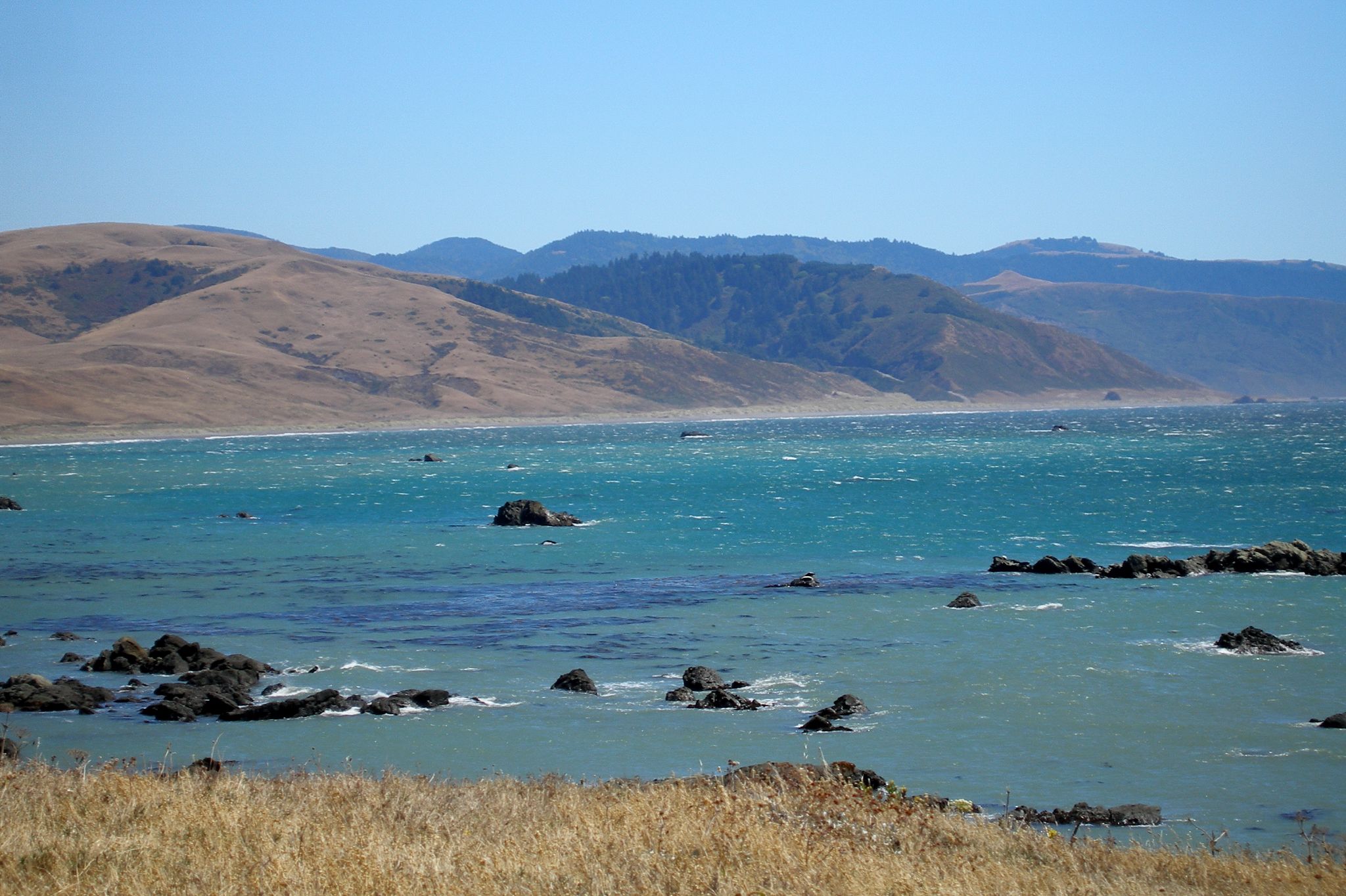Cape Mendocino on:
[Wikipedia]
[Google]
[Amazon]
 Cape Mendocino ( Spanish: ''Cabo Mendocino'', meaning "Cape of Mendoza"), which is located approximately north of San Francisco, is located on the Lost Coast entirely within
Cape Mendocino ( Spanish: ''Cabo Mendocino'', meaning "Cape of Mendoza"), which is located approximately north of San Francisco, is located on the Lost Coast entirely within
 The Cape Mendocino region of California's north coast is one of the most seismically active regions in the
The Cape Mendocino region of California's north coast is one of the most seismically active regions in the
Cape Mendocino Lighthouse
Living on Shaky Ground: How to Survive Earthquakes & Tsunamis in Northern California
{{Coord, 40.4401, N, 124.4095, W, type:landmark_region:US-CA, display=title Geology of California Mendocino Landforms of Humboldt County, California
 Cape Mendocino ( Spanish: ''Cabo Mendocino'', meaning "Cape of Mendoza"), which is located approximately north of San Francisco, is located on the Lost Coast entirely within
Cape Mendocino ( Spanish: ''Cabo Mendocino'', meaning "Cape of Mendoza"), which is located approximately north of San Francisco, is located on the Lost Coast entirely within Humboldt County, California
Humboldt County () is a county (United States), county located in the U.S. state of California. As of the 2020 United States census, 2020 census, the population was 136,463. The county seat is Eureka, California, Eureka.
Humboldt County compri ...
, United States. At 124° 24' 34" W longitude, it is the westernmost point on the coast of California
California () is a U.S. state, state in the Western United States that lies on the West Coast of the United States, Pacific Coast. It borders Oregon to the north, Nevada and Arizona to the east, and shares Mexico–United States border, an ...
. The South Cape Mendocino State Marine Reserve and Sugarloaf Island are immediately offshore, although closed to public access due to their protected status. Sugarloaf Island is cited as California's westernmost island.
History
It was named by 16th-century Spanish navigators to honor Antonio de Mendoza, Viceroy ofNew Spain
New Spain, officially the Viceroyalty of New Spain ( ; Nahuatl: ''Yankwik Kaxtillan Birreiyotl''), originally the Kingdom of New Spain, was an integral territorial entity of the Spanish Empire, established by Habsburg Spain. It was one of several ...
, Cape Mendocino has been a landmark since the 16th century, when Manila Galleon
The Manila galleon (; ) refers to the Spain, Spanish trading Sailing ship, ships that linked the Philippines in the Spanish East Indies to Mexico (New Spain), across the Pacific Ocean. The ships made one or two round-trip voyages per year betwe ...
s followed the prevailing westerlies across the Pacific to the Cape, then followed the coast south to Acapulco, Mexico. The Cape Mendocino Light was lit on December 1, 1868, standing on eight prefabricated panels sent from San Francisco
San Francisco, officially the City and County of San Francisco, is a commercial, Financial District, San Francisco, financial, and Culture of San Francisco, cultural center of Northern California. With a population of 827,526 residents as of ...
. An automated light stood near the original location but was removed in 2013.
Geology
 The Cape Mendocino region of California's north coast is one of the most seismically active regions in the
The Cape Mendocino region of California's north coast is one of the most seismically active regions in the contiguous United States
The contiguous United States, also known as the U.S. mainland, officially referred to as the conterminous United States, consists of the 48 adjoining U.S. states and the District of Columbia of the United States in central North America. The te ...
. Three earthquakes with epicenters nearby at the town of Petrolia and offshore west of Cape Mendocino, 25–26 April 1992, were outstanding, one reaching 7.2 Mw; shaking the town so badly, fires broke out and burned down historic buildings, including the 100-year old general store and the original post office. Even the fire station suffered so much shifting from the quakes, fire crews had a difficult time extinguishing the fires. The quakes demonstrated that the Cascadia subduction zone is both capable of producing large earthquakes and generating tsunamis. Many geologists and seismologists believe that the main shock in the 1992 sequence may be a forerunner of a much more powerful earthquake in the Pacific Northwest.
Offshore of Cape Mendocino lies the Mendocino triple junction, a geologic triple junction where three tectonic plates
Plate tectonics (, ) is the scientific theory that the Earth's lithosphere comprises a number of large tectonic plates, which have been slowly moving since 3–4 billion years ago. The model builds on the concept of , an idea developed durin ...
come together. The San Andreas Fault
The San Andreas Fault is a continental Fault (geology)#Strike-slip faults, right-lateral strike-slip transform fault that extends roughly through the U.S. state of California. It forms part of the tectonics, tectonic boundary between the Paci ...
, a transform boundary, runs south from the junction, separating the Pacific plate and the North American plate. To the north lies the Cascadia subduction zone, where the Gorda plate is being subducted under the margin of the North American plate. Running west from the triple junction is the Mendocino Fault, the transform boundary between the Gorda plate and the Pacific plate. Cape Mendocino California is part of the Cascadia subduction zone.
See also
* King Range (California)References
External links
Cape Mendocino Lighthouse
Living on Shaky Ground: How to Survive Earthquakes & Tsunamis in Northern California
{{Coord, 40.4401, N, 124.4095, W, type:landmark_region:US-CA, display=title Geology of California Mendocino Landforms of Humboldt County, California